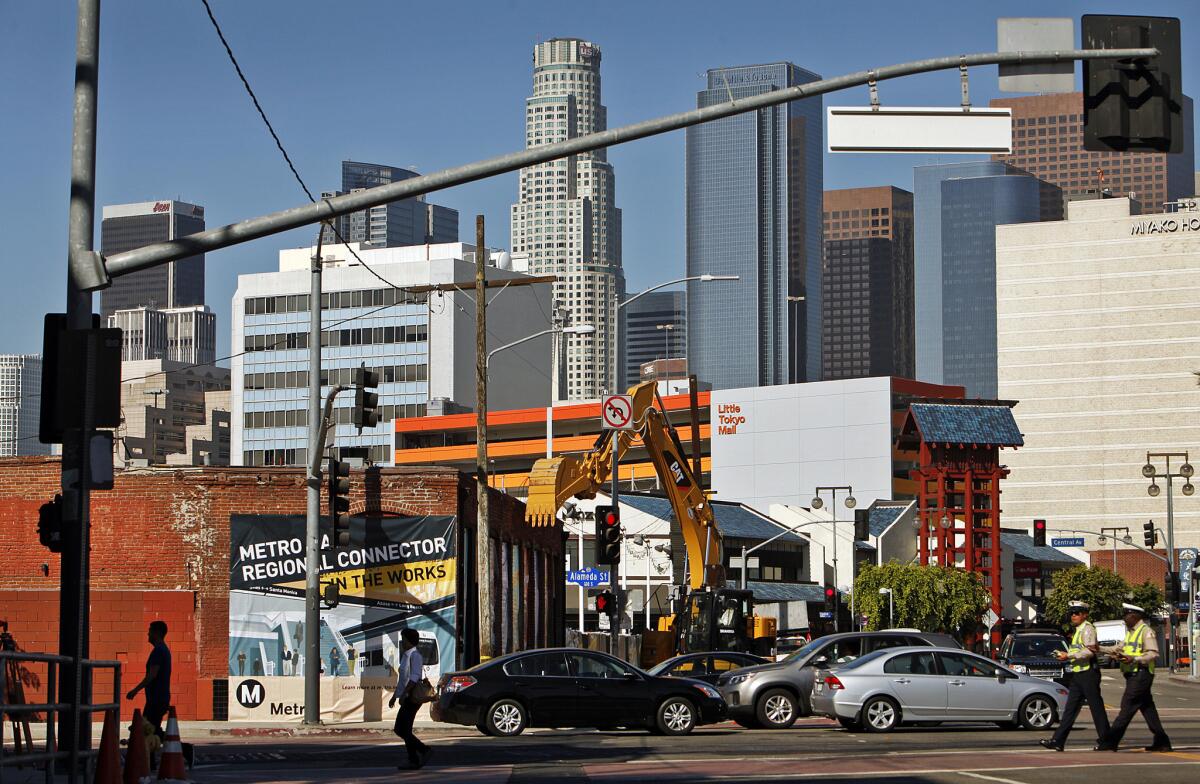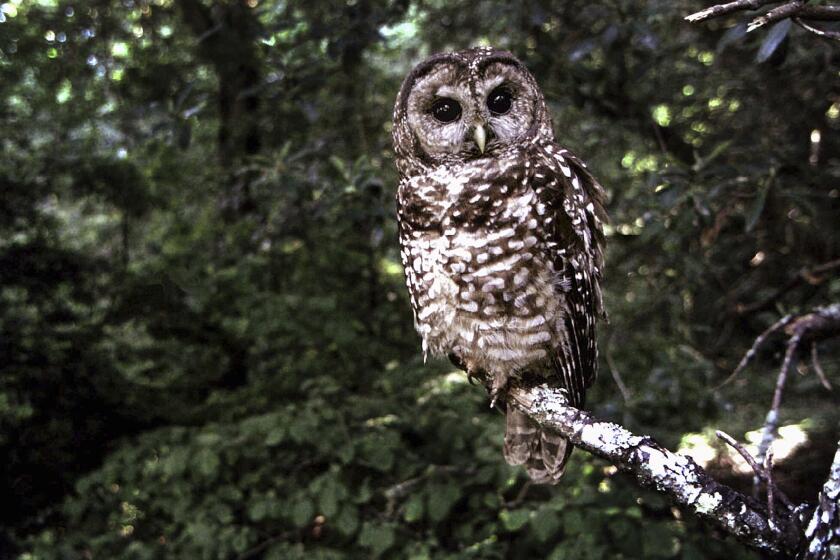Metro breaks ground on key downtown L.A. subway link

- Share via
Transportation officials Tuesday cheered the start of construction for a subway project designed to close a frustrating gap in Los Angeles County’s growing rail network.
During a symbolic groundbreaking in Little Tokyo, local and federal representatives touted the 1.9-mile, $1.4-billion Downtown Regional Connector’s potential to help unite a sprawling and congested region. The subway project is designed to provide a connection between three disjointed rail lines in downtown Los Angeles.
The project is scheduled to open in 2020. It will allow Metro Blue, Gold and Expo lines to run through the urban core between a 7th Street subway station in the southwest section of downtown and Union Station on the Central City’s northeastern edge.
For the first time, passengers will be able to travel from Long Beach to Azusa, or East Los Angeles to Santa Monica, without changing trains. Any rail trip passing through downtown currently requires two transfers.
“This morning, we boldly go where no transit agency has gone before,” said Star Trek actor George Takei, the ceremony’s master of ceremonies, echoing a signature line from the series. “We go underground, under Little Tokyo.”
The Los Angeles County Metropolitan Transportation Authority project will add three train stations in downtown, at 1st Street and Central Avenue, 2nd Street and Broadway, and 2nd and Hope streets. Officials predict that the improvement will attract more than 17,000 new daily riders.
“Some people lose hours every week to transfer from a bus to the train, just to keep going in the same direction,” U.S. Transportation Secretary Anthony Foxx said. The new subway connector “will buy you time, peace of mind,” he said, “the chance to live your life and not just wade through it.”
Another goal, said Los Angeles Mayor and Metro Chairman Eric Garcetti, is convincing more Angelenos that public transit can be faster—or at least less painful—than driving.
Earlier this year, Metro accepted a $670-million federal grant and a $160-million low-interest loan for the project. Much of the remainder of the project’s funds will come from Measure R, a half-cent sales tax increase that Los Angeles County voters approved in 2008.
Los Angeles County Supervisor Gloria Molina, whose district includes downtown, said Tuesday that she and fellow supervisor Mark Ridley-Thomas are working on ways to reduce the effects of Metro construction on local businesses. Several popular downtown restaurants, including The Spice Table and Senor Fish, recently closed to accomodate the new rail station.
Takei’s involvement with public transit issues began in the 1970s, when he served on the board of the Southern California Rapid Transit District, an MTA predecessor agency that built the first phase of the Red Line subway. Takei’s personal website says he was “one of the driving forces” behind a program that commissions local artwork for each Metro rail station.
For more Los Angeles transportation news, follow @laura_nelson on Twitter.
More to Read
Sign up for Essential California
The most important California stories and recommendations in your inbox every morning.
You may occasionally receive promotional content from the Los Angeles Times.











